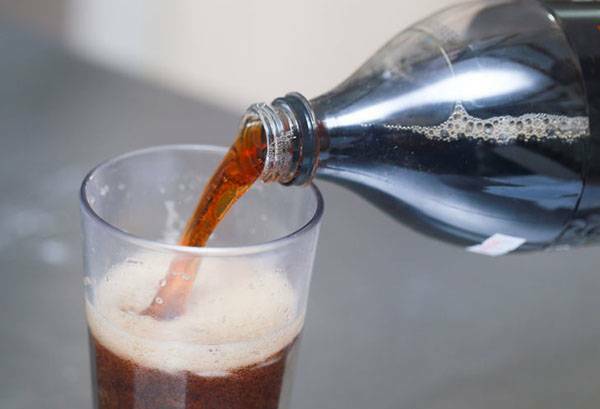Contents:
- Which products can be stored at room temperature?
- How to store food in the refrigerator?
- Terms and Conditions of Storage
- Features of some
products Each hostess should know how to properly store the products. Well, if you have a table with the terms and conditions of availability. But to look into it is not always possible, so it is worth remembering the features of the most commonly used goods: bread, meat, vegetables, cereals, dairy products, sauces and others. They will spoil much faster if you do not take the necessary measures.

Which products can be stored at room temperature?
Storage of food products that quickly deteriorate: sausages, dairy products, sauces - often better organized than dry. But they also need to be given enough attention. They have expiration dates, after which they lose useful qualities and an unpleasant smell.
- The optimal place for bread is a wooden unpainted bakery, it should not be near heaters or sinks.
Temperature not less than 6 degrees, air is desirable dry, then the product will be suitable for food up to 5 days. Factory cellophane packaging can be left, it is equipped with small holes through which air enters. In a simple bag, the product "suffocates", mold will soon appear on it. Polyethylene should be used only if you need to hide a loaf in the refrigerator.
- In a sealed bottle, vegetable oils are stored at normal temperature for 4-6 months.
After opening the product should be placed in the refrigerator, as it will soon oxidize. The more polyunsaturated fatty acids in it, the faster this process passes. This applies, for example, to a very useful flaxseed oil. Olive in conditions of cold thickens, becomes cloudy. This does not mean that it has deteriorated, it will return to normal at room temperature.
- Cereals best save their properties in loosely closed containers or linen bags.
But they are very susceptible to pest infestation. Therefore, the rules for storage of products in this category provide for hermetic containers. Do not keep them on the balcony: there it is easier for bugs to get comfortable, as they can move from neighbors. Most cereals can lie up to two years, semolina and corn - 10 months, millet - 9, but oat flakes total 4.

- Pasta is stored in the same way as cereals.
Preference should be given to tightly closed jars to protect the product from beetles and larvae. The temperature should not exceed 20 degrees, humidity is moderate. Egg pasta retains its qualities for up to a year, others - up to two.
- Flour and starch are afraid of high humidity.
They lose their structure, they start germs, mold appears. In addition, there is a risk of infection by insects. Flour is stored a little more than six months, and starch - up to two years.
- Salt and sugar also deteriorate under the influence of high humidity.
But thanks to the antiseptic properties of microorganisms and pests in them not zavedutsya. Products can only lose flowability. If stored properly, they will remain usable for years.
- Dried fruits begin to darken at a temperature above 20 degrees.
For the period of their storage, the initial quality of the fruit is affected. Prunes can lie for six months, others - twice as long.

How to store food in the refrigerator?
Storage of food in the refrigerator should be properly arranged. The temperature rises from the bottom up. If on the shelf adjacent to the freezer, about 0 degrees, in the other part can reach up to 8. In modern technology, the freezer is usually located at the bottom. So in the compartment above it you need to remove everything that quickly spoils.
You can often find containers for vegetables and fruits over the freezer. But not all of them are well tolerated by such a low temperature. For example, apples, plums, celery will be well preserved, but cucumbers or berries can freeze, which will change the look and taste. They should be placed on the top shelf.
Important!
Near the door, the temperature is higher than in the interior of the refrigerator.
Most of the products are well-behaved on the middle shelves of the refrigerator: these are ready meals, and cheese, butter and various sweets. But the door has an unstable temperature, as the refrigerator is constantly opened. Therefore, it is possible to add to it only that which such attacks will not damage. It is suitable for storing beverages, tightly closed sauces, eggs, provided that they are eaten in the near future.
The principle of increasing the degrees from the bottom up also works in the freezer. Therefore, at the top is better to place fish, frozen vegetables and fruits, butter. An excessively low temperature will lead to a breakdown in structure and loss of taste. Semi-finished products from the dough should also not be taken down, as they begin to crumble. The lowest compartment is suitable for meat and ice cream.

Terms and storage terms
To store products as long as possible, they should be properly packaged. Humidity promotes reproduction of bacteria, therefore it is necessary to take measures so that they do not move to food.
Raw foods must be cleaned in plastic containers, glassware or plastic bags. Metal containers are not suitable, since their surface is oxidized when in contact with meat or fish, resulting in the release of toxic substances. This applies to the canned food, so they should be transferred from the can.
Only vegetables and fruits can be stored unpackaged. But wash them before you hide in the refrigerator, it is undesirable. This will also lead to an increased rate of multiplication of microorganisms and rapid deterioration.
Under all conditions, fish from the refrigerator will be suitable for 2 days, meat - up to 5, dairy products from 3 days to a week. In the freezer, food should not be kept longer than 3 months. There are also possible after this period, but they will not bring any benefit: vitamins and protein at low temperature are gradually destroyed. If for some time there was no electricity and the refrigerator managed to defrost, it is impossible to subject the products to repeated freezing.
The shelf life of semi-finished products depends on the type of product. These can be different types of dough or products with a dough sheath, such as dumplings and dumplings. At a temperature of about 18 degrees, the shelf life is 2 months.
It is necessary to take care of the cleanliness of the unit. Monthly you should wash the shelves. In the fruit compartments it is necessary to put a special sponge mat, then there will be additional protection from mold. It is important from time to time to sort through the contents of the refrigerator. Spoiled vegetables rot, late packs of sauces must be discarded.

Features of some
products Most fruits and vegetables are perfectly stored without a refrigerator. But exotic, for example bananas, at low temperature lose their taste and useful qualities. But the berries are very fragile skin, which easily bursts. At the same time, juice is allocated, as a result, mold can form the next day. So they should be placed in cardboard boxes in a thin layer and put in the refrigerator.
It is also worth noting that some fruits and vegetables emit ethylene. This gas leads to accelerated maturation. Therefore, apples, bananas, figs, plums, tomatoes should be separated from the rest. The same property can be used to make the unripe fruit ripen more quickly: remove it in one package with an apple, for example.
To keep the greens well, you need to cut off the stems a little and put the plants in water. Then you can leave it at normal temperature or put it in the refrigerator - depending on how soon they go into business. Leafy greens, such as spinach and rukkola, are often sold in stores in closely packed plastic packages. This is not the best way to store products, as they break, wither and change color. To prevent this from happening, it is necessary to shift the leaves into a vacuum container, before rinsing and shaking off the water. After that, you need to put it in the refrigerator. You can also cover the greens in a container with a damp cloth to prevent the loss of moisture.
Some vegetables are perfectly stored and without low temperature. So there's no point in them taking their place in the refrigerator. This applies to onion and garlic with their strong shell, potatoes, pumpkin, beets with a dense structure. It is better to organize a box in the kitchen for them.
Feature of nuts and seeds - they have a very large amount of fat, which can rancid if stored incorrectly. It is best to leave them for the winter in the shell. They can be folded into a container with a well-fitting lid and carried to a dark cool place. Purified they occupy little space and are convenient for use, but are more prone to spoilage. Therefore, they should be in the refrigerator. They can also be frozen.
You need to pay attention to the storage of sauces. Wine sauce in a cool place will not spoil a few years, even improve their quality. Soy sauce and salsa after opening should be put in the refrigerator for up to 1 year. Mayonnaise should also be in the refrigerator, but not more than two months. Place for sauces can be taken away on the door - they are not afraid of temperature changes at the opening.
Conditions and terms of storage of canned food, as well as other products, are indicated on the label. Usually they have enough normal temperature. But too high will hurt. The products will have a metallic taste. If it is a question of fruit canned food, which include jams and juices, then they will darken. At low temperature - sugar. Particular attention should be paid to preserves - unsterilized preserves. They should be in the refrigerator, at normal temperature, their suitability time is up to 3 days.
Food storage is a task that must be taken responsibly. It is necessary to organize a kitchen space so that the placement of vegetables, fruits, meat, fish, dairy products, sauces was not difficult. A table of necessary conditions and terms for different products will help in this.



